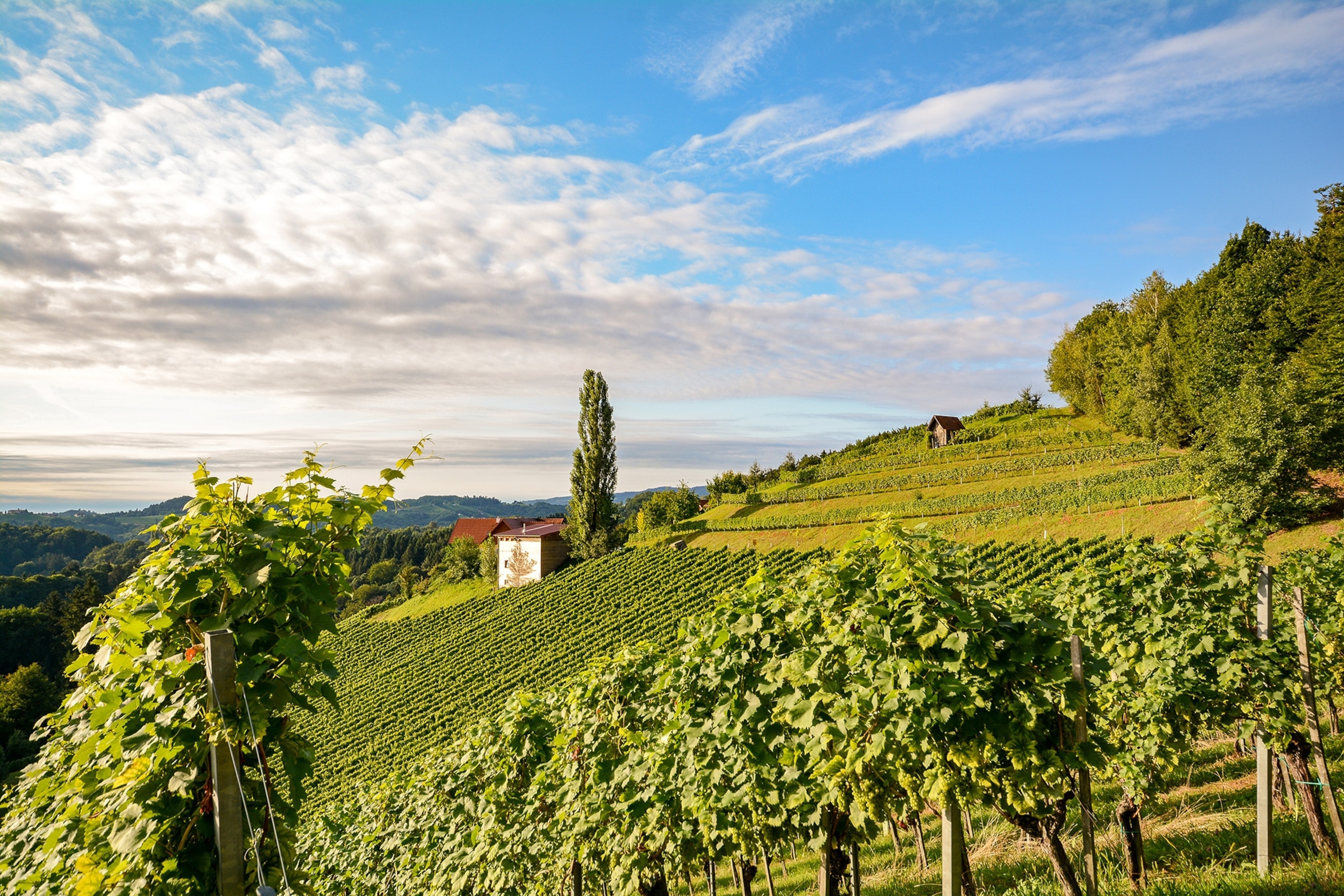From terraced Alpine slopes to riverside vineyards shaped by centuries of history, Austria’s wine scene is an elegant paradox — steeped in tradition, yet thrillingly modern. With a climate built for finesse and winemakers boldly pushing past clichés, Austrian wine today is quietly making its case as one of Europe’s most nuanced and surprising pleasures.
A land carved by time and terroir
Austria’s vineyards are not accidental. They are deliberate, ancient, and etched into the very contours of the country. In the east and southeast, vines line river valleys and foothills, with the Danube, especially through regions like Wachau and Kremstal, acting as both visual centerpiece and climate moderator. These are landscapes shaped over millennia — by glaciers, monks, and monarchs — and every glass of Austrian wine seems to carry some echo of that history.

Terraced vineyards built into sun-drenched hillsides allow grapevines to soak up the sun while benefiting from cool nighttime temperatures. This diurnal shift gives Austrian wines their signature balance: crisp acidity alongside expressive aromatics. And while white grapes — most famously Grüner Veltliner — reign supreme, Austria also produces compelling reds, especially from native varieties like Blaufränkisch and Zweigelt.
Unlike neighboring giants like France or Italy, Austria’s wine identity is more focused, more intimate. Its relatively small scale means that many vineyards are still family-run, and winemaking often feels like an act of craftsmanship rather than commerce.
Grüner and beyond: Redefining the white wine canon
Grüner Veltliner may be Austria’s unofficial vinous ambassador, and for good reason. It’s versatile, ranging from feather-light and peppery to opulent and age-worthy. It pairs as effortlessly with schnitzel as it does with sushi, and its mineral core makes it a darling of sommeliers around the world.
But Grüner is just the beginning.

Riesling, grown primarily in the rocky Wachau, Kamptal, and Kremstal regions, takes on a uniquely dry and flinty character — more steely than its German cousin. Meanwhile, lesser-known whites like Neuburger, Rotgipfler, and Zierfandler are undergoing a quiet revival, offering rich textures and subtle spice for those willing to stray off the beaten palate.
Austria’s reds are also worth attention. Blaufränkisch — structured, earthy, and age-worthy — has drawn comparisons to Northern Rhône Syrah or Cru Beaujolais. Zweigelt, a local cross, gives fruit-forward, approachable wines, while St. Laurent, with its velvety tannins, adds a brooding elegance to the mix.
Wine culture with precision and play

There is something unmistakably Austrian about its wine culture: precise, thoughtful, but never stiff. Whether sipping at a sleek Vienna wine bar or relaxing in a heuriger (traditional wine tavern) in the hills of Burgenland, the mood is one of relaxed refinement. Wine is not just a product but a way of life — deeply woven into the national identity.
The country’s strict wine laws (some of the most rigorous in the world) ensure quality, but they also support innovation. A generation of young winemakers is taking risks with natural fermentation, amphora aging, and biodynamic practices — not to rebel, but to reveal new dimensions of place and grape. These new voices are not replacing tradition; they’re expanding its boundaries.
Events like Vienna Wine Week or the Wachau Marathon offer immersive experiences that connect visitors to the rhythms of Austrian wine life, from cellar to vineyard to table.
Sustainability as second nature

Austrians are not newcomers to sustainability. With over 17% of the country’s vineyards certified organic — and many more practicing low-intervention farming — Austria ranks among Europe’s greenest wine producers. But here, eco-consciousness isn’t a marketing strategy. It’s embedded in the cultural approach to land and longevity.
The shift toward organic and biodynamic viticulture has been especially embraced in regions like Styria, where steep slopes require careful handwork, and in Burgenland, where warmer temperatures are encouraging experimentation with drought-resistant varieties and cover crops.
As climate change nudges the wine world in new directions, Austria seems uniquely poised to adapt. Its cooler continental climate allows for finesse even as summers heat up, and its winemakers’ attention to microclimate and soil gives them tools to respond with grace.
Why Austria should be your next wine destination
For travelers, Austrian wine country offers a rare blend: Old World beauty without the crowds, and wines that are both classic and surprising. In places like the Wachau, you can bike along the Danube between centuries-old monasteries and vineyard-studded cliffs. In Styria, you’ll find rolling green hills, pumpkin seed oil, and Sauvignon Blanc with a piercing alpine edge.
Vienna, uniquely, is the only capital city in the world with significant vineyards inside its limits. A tram ride can take you from Baroque palaces to hillside wine taverns — a cultural leap that’s pure Austria.
Whether you come for the Grüner or stay for the Blaufränkisch, Austrian wine offers a masterclass in restraint, elegance, and quiet confidence. It doesn’t shout to be heard. It simply invites you to listen — and taste.




